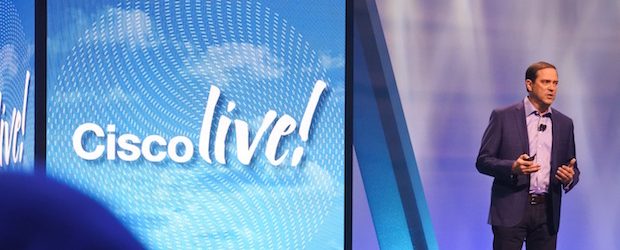LAS VEGAS – On Day 2 of Cisco Live, the vendor focused on the issue of security, digital transformation and the network with a rather bold claim that it is actively working to ensure that its customers can benefit from tools that will protect them from exploits 100 per cent of the time when using connected devices and value-added services.
The company previously announced its new Cisco Security Services for Digital Transformation offering, a service the vendor claims will aid organizations in identifying their readiness to adopt digital technologies. Expert advisers recommend security strategies and provide tailored solutions based on industry trends and vital business needs to achieve agility, innovation, and growth, the company said in a statement.
The very idea of digital transformation is around enabling more users, devices, and applications online; this means that enterprises are facing growing security challenges around protecting an expanding attack surface. According to its security business group vice president Scott Harrell, Cisco product tools offer “complete” protection and network visibility for end users with on-premises staff and remote workers.
This is “nation state-worthy” type of security architecture, Harrell claimed, adding it’s no longer about protecting the on-prem or off-prem mobile workers on the network 75 per cent of the time. It’s not necessarily about protection against 100 per cent of threats but rather having technology in place that extends real-time protection to all devices and points of connection regardless of location, helping to drive down the time to detection in the process, he said.
The Cisco cloud security model is based on ensuring IT security is simple, open and automated, he continued. And when it comes to securing the cloud, Harrell notes that it’s all about making security “simpler to deploy, scale, and manage.”
According to Cisco CEO Chuck Robbins, the company is positioning itself and partners away from the traditional product sales enterprises into becoming service-oriented organizations focused on recurring revenue by way of a subscription model.
But, “there’s not a one-to-one abrupt transition that this will occur,” Robbins said, adding he anticipates this process to happen over time.
And digital transformation doesn’t mean that hardware is going away, it simply means that physical products will be more advanced though software, Robbins offered.





